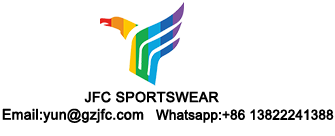Customized basketball mesh vest
Customized basketball vests are mainly divided into two categories: individual/small team small quantity customization and team/group bulk customization. Their processes, choices, and prices vary greatly. Below, I will provide you with a detailed analysis.
1、 Determine your customization needs (the first and most important step)
Before starting to search for suppliers, please clarify the following points:
Customized quantity:
1-10 pieces: Belonging to small customization, suitable for individuals, friends, or family teams.
10-50 pieces: Customized for small and medium-sized teams.
More than 50 pieces: Large teams or clubs can customize in bulk, with ample bargaining space.
Customized content:
Printing/Embroidery: This is the most common customization.
Number: font, size, color.
Name: Font, Size, Color.
Team logo/pattern: Position (chest, back, cuffs).
Color: Do you need ready-made colors provided by the supplier, or do you need custom colors (with strict color requirements)? Custom colors usually have a minimum order quantity.
Pattern: Is it a standard pattern or does it require a brand new pattern based on your design? The cost of creating a brand new version is high and only suitable for large orders.
Budget:
Economy type (below 50 yuan/piece): Usually uses ordinary textured mesh fabric and heat transfer printing.
Standard type (50-150 yuan/piece): using branded same factory or high-quality quick drying fabrics, offset printing or embroidery, with finer workmanship.
High end model (over 150 yuan/piece): using top-notch functional fabrics (such as Nike Dri FIT, Adidas Climalite, etc.), with exquisite details, may include the cost of new pattern making.
2、 Customized process
A. For individuals/small teams (less than 10 items)
This method has relatively limited options, but it is very flexible and fast.
Main channels:
E-commerce platforms (Taobao, JD.com, Pinduoduo):
Search keywords: “Customized basketball suit”, “Mesh vest customization”, “DIY basketball vest”.
Operation process:
Choose a store with good reputation and high sales.
Usually, shop owners provide online customization tools. You can choose the base color of the vest, upload the logo image, enter the number and name, and select the font and position.
Communicate with customer service to confirm the design draft and details.
Order payment, wait for production and shipment.
Advantages: Convenient and fast, with multiple choices and transparent prices.
Disadvantages: The fabric and quality may vary greatly, requiring careful identification; Customization details (such as logo complexity) may have limitations.
Local graphic and text advertisements/printing shops:
You can purchase a blank basketball vest yourself and take it to a local store for printing.
Advantages: Face to face communication and on-site observation of results.
Disadvantages: The price may be higher, and the professionalism (especially for sports fabrics) may not be as good as that of professional sportswear customizers.
B. For teams/groups (recommended for 10 or more items)
This is the most professional and effective customization method.
Main channels: Professional sportswear customization manufacturers/brands
These merchants focus on team orders and provide one-stop services from fabric, design to production.
Standard customization process:
Consultation and quotation:
Contact multiple customization vendors to provide your requirements (quantity, approximate style, customization content).
They will provide a preliminary quotation and fabric samples based on your needs.
Confirm design:
Provide design drafts: You can provide prepared design drawings (preferably in vector files such as AI, PSD, etc.), or have custom designers create design drafts for free or for a fee based on your ideas.
Confirm details: Carefully check all details such as color, pattern position, font, size, etc. Usually, an electronic version of the rendering will be received for confirmation.
Pay deposit:
After confirming the design, a certain percentage of deposit (usually 30% -50%) needs to be paid.
Production and production:
The manufacturer begins to purchase fabrics, plate making, printing/embroidery, and stitching. This process usually takes 7-15 working days, depending on the complexity of the order.
Inspection and Receipt:
After production is completed, the manufacturer will take physical photos or send samples to you for confirmation.
After confirming the accuracy, the final payment will be made and the manufacturer will arrange for shipment.
